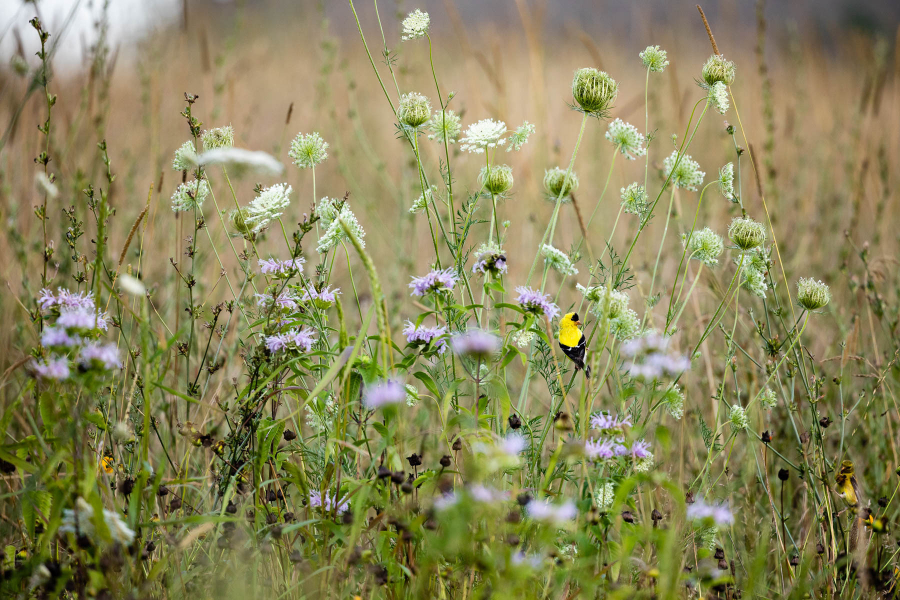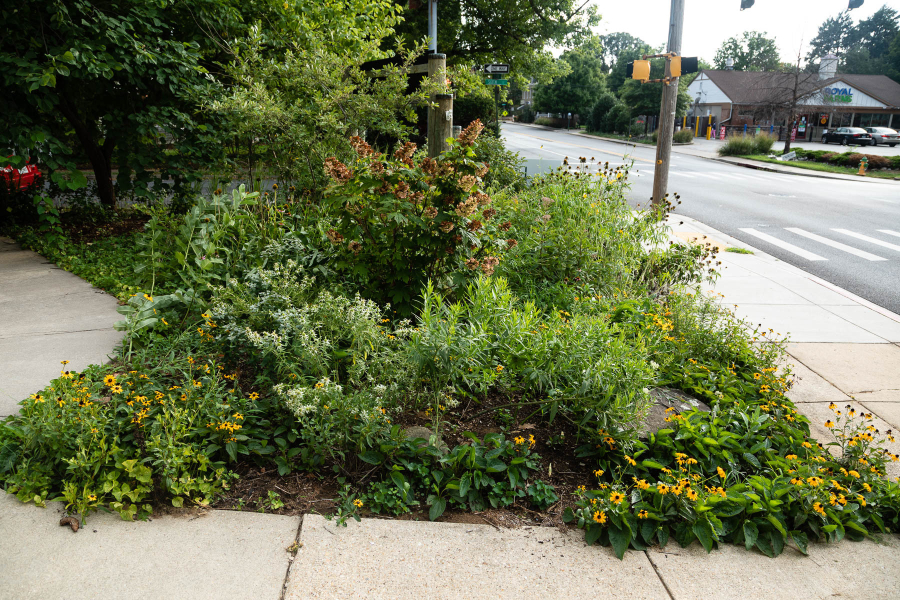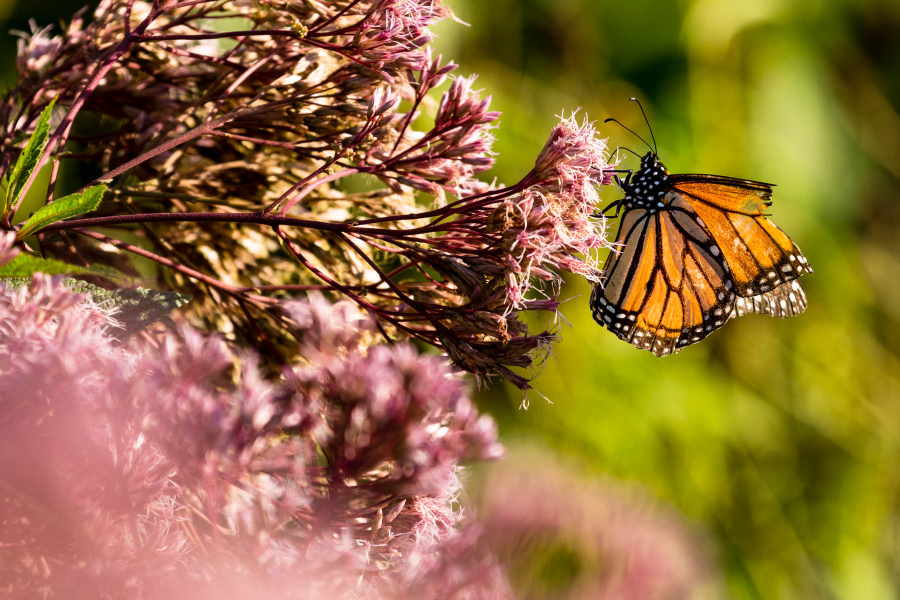Quick tips to support more wildlife in your garden
With a little know-how you can boost biodiversity close to home

Maybe you just want to watch a goldfinch’s seed-fueled feeding frenzy or see more monarch butterflies in your neighborhood. Or perhaps you want to take advantage of the physical and mental health benefits of green spaces. Whatever the reason, you may be wondering how you can add a little more wildlife to your backyard, your patio or that vacant lot down the street..
It’s a challenge that any environmentally-conscious gardener faces. How do you cultivate an outdoor space for human needs but still welcome your nonhuman neighbors—the birds, pollinators and other animals that traditional gardens often keep far away?
The following tips are just some of the untapped ways that people can support wildlife closer to home.
Plant native plants
Plants serve a lot of roles for us, whether it’s providing shade, food, privacy screens or just attractive blooms. Native plants accomplish anything that non-native, ornamental species can, while providing the best boost for your local ecosystem. They also require less maintenance because they are adapted to your region and have co-evolved with the insects that eat them, making pest outbreaks unlikely.
You can tailor your choices to support birds, pollinators or just wildlife in general. Any garden with some amount of native plants is going to feed the little critters that in turn support bigger ones. An oak tree, for example, supports hundreds of species of caterpillars that most birds depend on when feeding their young.
Let your garden grow a mullet

Wildlife habitat is usually wild-looking, and a garden where each plant is neatly spaced and surrounded by miles of mulch is not going to shelter wildlife effectively. But even if you want to turn your whole yard into a refuge, you might be constrained by a homeowner association or the peer pressure of your neighbors.
One solution is to give the “front” of your garden the business-as-usual treatment while letting the garden grow wild in the “back.” Tending to shorter plants on the most visible edges of your garden provides a signal of care, as does a sign indicating that your garden is wildlife habitat, showing anyone concerned that you are making intentional choices and not just letting the lawnmower rust.
Keep a pollinator lawn
Even if you’re not quite ready to participate in No Mow May, or to ditch your non-native turf grass entirely, an easy first step is mow your lawn at your mower’s highest height setting so that more plants can flower in it. You can also mix some grass alternatives into your lawn. Many people are surprised to learn that violets, for example, are a native species and a host plant for the great spangled fritillary butterfly.
Maintain your bird feeders and bee houses
A backyard bird feeder is a year-round spectacle, but nobody wants to see birds fall ill from disease. Experts recommend cleaning your bird feeder every two weeks.
Native bee houses have also become popular, but having a lot of solitary bees nesting so closely together can also give a boost to disease, parasites and parasitoids. Bee houses should use hollow stems of at least five or six inches that are replaced every year after the last season’s baby bees emerge.
The most sustainable option—requiring fewer trips to the feed store—is adding more native plants that naturally provide seed sources for birds as well as stems for bees to nest in.
Trim the stems each spring
If you feel a need to make your garden look a little tidier after the growing season, the best time to trim last year’s dead stems is at the very end of winter, when temperatures are consistently above about 50 degrees. By then, the standing seedheads have sustained birds through the cold months. When you do trim, leave about 12–18 inches standing so that native bees and other insects can use the opened, hollow stems as nesting habitat in early spring.
Leave the leaves each fall
Pollinators aren’t only feeding in your yard; they’re also laying eggs and going dormant within autumn’s leaf litter. Bagging your leaves to be hauled away puts a dent in the next generation of many species. Leaving leaf litter unshredded protects insects and chrysalises nestled within, and is an effective alternative to expensive bags of heavy wood mulch, often containing artificial dyes.
Diversify your blooms

Pollinators need to eat for most of the year, so choosing native plants that all bloom in the summer isn’t enough. Adding early bloomers like eastern red columbine and golden alexander as well as late bloomers like goldenrods and asters will provide a steady food supply. Trees and shrubs are often some of the first bloomers as well, so the flowers of an eastern redbud or serviceberry is a great help to pollinators and an attractive way to usher in spring.
Avoid friendly fire
It’s no use planting native plants only to spray pesticides that might kill bees and butterflies, along with anything you might have considered undesirable. One of the benefits of a healthy habitat garden is that the increase in biodiversity will make pest outbreaks less likely. This is because your garden will harbor many tiny predators who will make short work of a potential pest. Another upside is that those chemicals won’t have a chance to wash downstream during an unexpected rain and cause unintended harm.
Slow down

Not everyone has the means to leave home for a day or weekend and visit a park or wildlife refuge. Nor is it sustainable to burn gallons of gasoline on a paved highway every time you want to get close to nature. So, it’s even more important to connect with nature at the local scale, whether it’s in your backyard, a planter in your apartment complex or a community center. With support, green space can also flourish in less obvious spots like sidewalks, vacant lots and places of worship.
Though the amount of green space might be limited at your home or in your community, the more you learn about the natural dramas that wildlife provide, the richer your space will feel. You’ll want to save gas and spend significant lengths of time in your garden. You’ll learn more about the species you’ve attracted, engendering empathy for your neighborhood’s other inhabitants. You’ll be more likely to anticipate your garden’s needs. And where before you saw weeds and pests, you’ll see interesting species with stories to tell.
If you’d like to find more ways to help the Chesapeake Bay from home, visit our “Take Action” page.

Comments
There are no comments.
Thank you!
Your comment has been received. Before it can be published, the comment will be reviewed by our team to ensure it adheres with our rules of engagement.
Back to recent stories